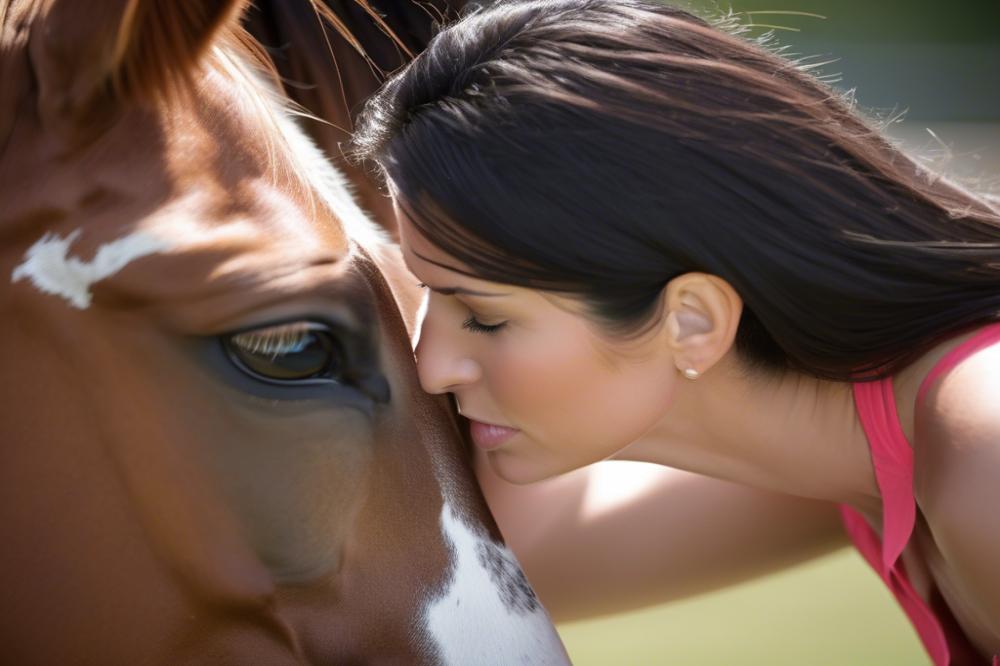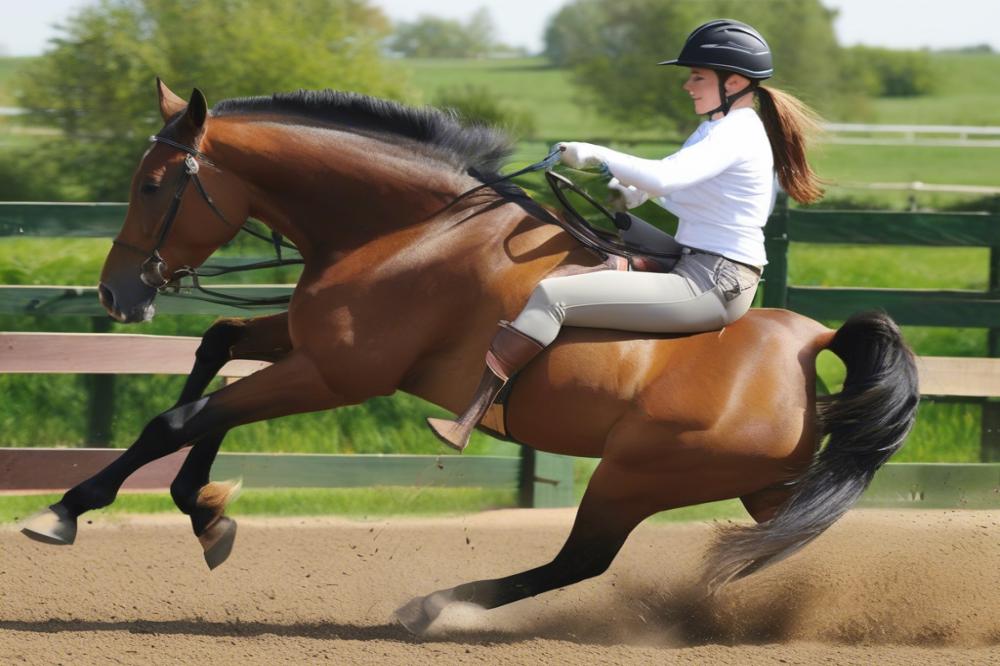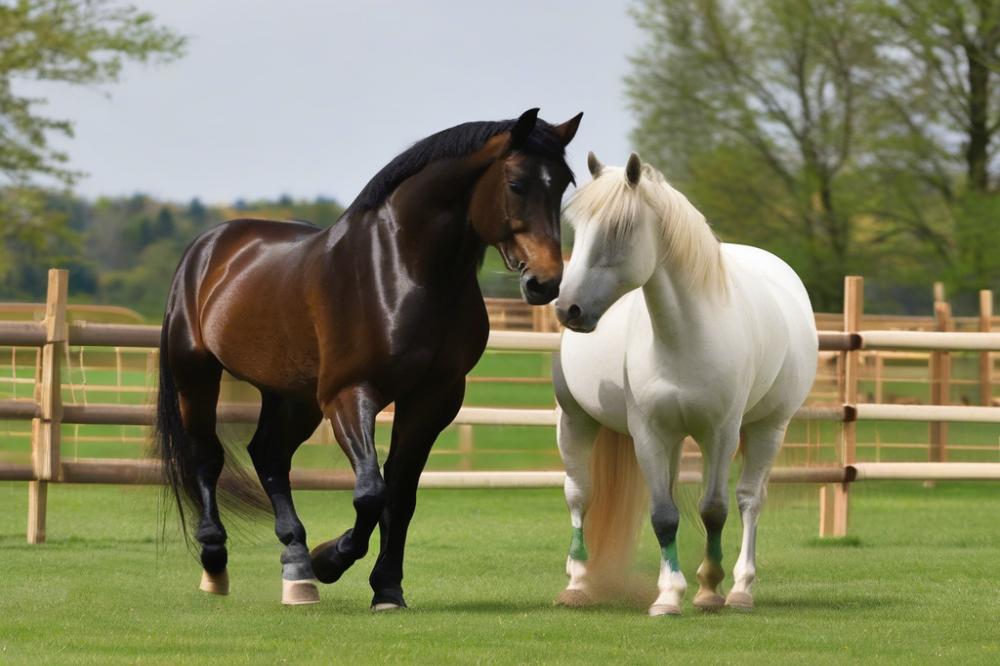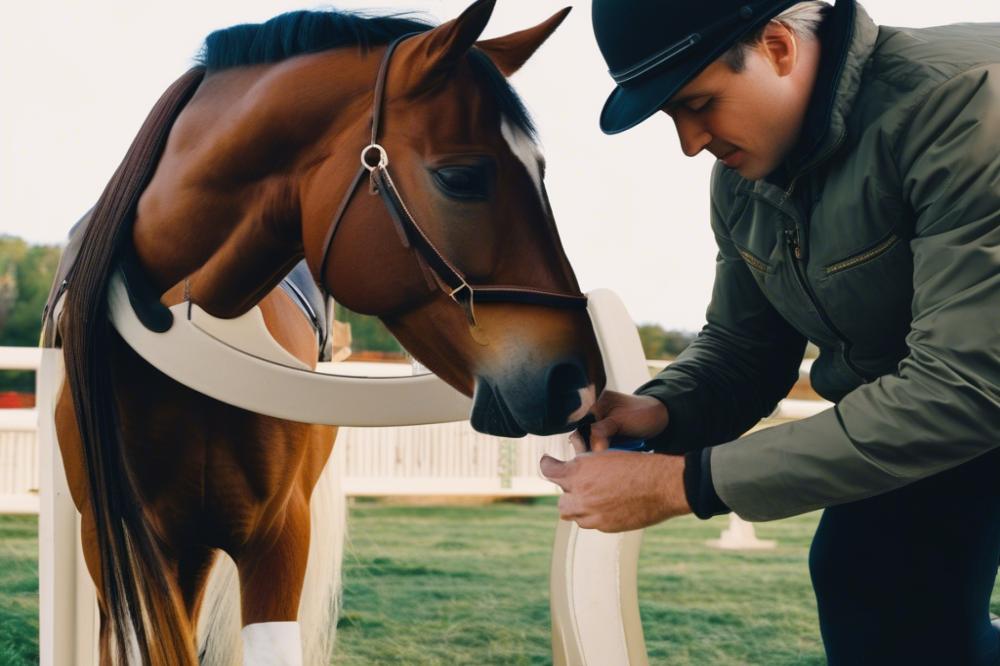Understanding the World of Horses
Horses are fascinating creatures, with a blend of strength and grace that captivates anyone lucky enough to be around them. Their anatomy is specifically designed for strength and speed, but it’s not just their muscles that stand out. Take a peek inside a horse’s mouth, and you’ll discover powerful jaws equipped with strong teeth, designed for grinding tough grasses and crunchy grains. This unique feature serves a purpose not only for eating but also for communicating with other horses. Horses often use their mouths to nudge or bite while establishing boundaries among their herd. Their behavior reflects their natural instincts, and understanding these habits can significantly enhance horse care.
Why Bite Strength Matters

Understanding how strong a horse’s bite can be is crucial for anyone involved in horse ownership or care. While they might seem gentle and soft-natured, a horse can deliver quite a painful bite when startled or provoked. Recognizing the potential for harm is vital for ensuring horse safety. A person can easily underestimate an animal’s strength, leading to unexpected incidents. This knowledge can help both horse lovers and professionals manage equine issues better and avoid any incidents that could arise from mishandling.
What This Article Will Cover

This article aims to delve deeper into horse bite strength and the aspects surrounding it, including techniques for bite treatment when injuries occur. Knowing how to address bites is essential for horse health as well as the safety of those handling these animals. Through this discussion, we’ll also touch on preventative measures to help avoid such situations altogether. After all, a little knowledge goes a long way when handling these majestic giants. Besides, you wouldn’t want to get bitten when all you wanted was a friendly pat, right? So, gear up as we trot through an array of fascinating facts and useful tips—it’s going to be both informative and, hopefully, a little bit fun!
Also, keep an eye out for the signs of wear and tear that might affect older horses. For instance, recognizing the physical symptoms of horse dying of old age can prepare you for the difficult decisions that come with caring for an aging equine companion. And by the way, if you’re curious about how to transport your horse safely, be sure to check out the best trucks for pulling horse trailers!
Understanding Horse Bite Strength

Definition of Bite Strength
When we talk about bite strength, we mean how hard an animal can bite down on something. For horses, this refers to the force they can apply with their jaws and teeth. This is not just a random number; it plays a big role in how they eat, interact with their world, and even how they defend themselves.
Factors Influencing Bite Strength in Horses
Several factors come into play when we consider how strong a horse’s bite can be. Age is one factor. Younger horses may not have fully developed teeth yet, which can affect their strength. Another important aspect is the breed. Some breeds are known for having stronger jaws, which can lead to a more powerful bite. Also, diet matters. Horses that get a lot of tough food might develop stronger muscles in their jaws. Don’t forget about equine health! Overall well-being can also impact how strong those bites are.
Comparison of Horse Bite Strength to Other Animals
You might be surprised to learn how a horse’s bite stacks up against other animals. For example, dogs, with their sharp teeth, have a different type of bite, designed for ripping and tearing. In contrast, a horse’s teeth are flat and designed for grinding. That doesn’t mean horses are weak. In fact, horse bite strength is impressive. It beats that of many smaller animals. Yet, it falls short when compared to large carnivores like lions or tigers. They have the muscle and structure specifically for powerful bites.
Common Misconceptions About Horse Bites
Many folks think a horse’s bite isn’t that dangerous, but that’s not always true. While their bite might not be meant for attacking, it can really hurt if they decide to chomp down. Some people believe horses can’t bite hard enough to break skin. Wrong! A determined horse can cause injuries, especially if they’re startled or feel threatened. Another common thought is that only horses in bad temper bite. Well, even the sweetest horse might nip if you surprise them! Being aware of horse safety is crucial for anyone who spends time around these magnificent creatures.
How Horse Bite Strength is Measured
Methods of Measuring Bite Strength
Measuring how strong a horse’s bite is can seem like a strange task, but it’s important for understanding equine health. Researchers use different methods to find out how much pressure a horse’s mouth can generate. One popular method involves using a device called a dynamometer. This tool helps gauge the force of the bite by measuring the pressure exerted when a horse chomps down.
Another way to measure bite strength is through pressure sensors. These sensors can be placed in a horse’s mouth while they eat. By checking the data, scientists learn how hard a horse bites during chewing. This information is useful for a range of equine issues, from dental health to dietary needs.
Tools and Technologies Used in Measurements
Along with dynamometers and pressure sensors, other tools also come into play. For example, equipment like strain gauges can detect minute changes in pressure. These high-tech tools give vets and researchers valuable insights into horse health.
Some studies now even use imaging technology to capture biting actions. This can help visualize how different breeds bite differently. So, when you think of a horse’s bite, remember that there’s a lot more going on than just chewing hay.
Research Studies and Findings
Many research studies have shed light on how strong a horse’s bite can truly be. Some findings suggest that large breeds have a more powerful bite compared to smaller ones. This makes sense; bigger horses often have larger jaws and stronger muscles.
Also, studies have linked bite strength with dental conditions. Horses with proper dental care generally show a better bite strength. This is crucial, as good horse care means understanding how to maintain a healthy mouth. It’s not just about preventing pain; it also affects their ability to eat properly.
In short, investigating bite strength involves a mix of advanced tools and simple techniques. Understanding this topic benefits anyone working in horse health. Just remember, an occasional horse bite might be more than just a funny story. Always keep horse safety in mind.
Implications of Horse Bite Strength
Impact of Bite Strength on Feeding and Nutrition
Bite strength plays a vital role in how horses eat. Horses are herbivores, relying on grasses and hay for their primary nutrition. If a horse has strong biting power, it can chew tougher plants more effectively. This not only helps them enjoy their meal but also gets the most nutrients possible. A horse struggling with weak bites may have difficulty breaking down its food, leading to potential equine health issues.
Healthy teeth are essential in this process. Regular dental check-ups are a part of horse care. When teeth wear down, it can hinder a horse’s ability to eat properly. Proper bite treatment ensures that our four-legged friends can munch happily and get a balanced diet.
Role in Social Interactions Among Horses
Ever notice how horses interact? They use their mouths to communicate. Whether grooming each other or establishing their place in the social hierarchy, biting plays a big part. A horse’s strong bite can assert dominance or friendship among its peers. Gentle nibbling might show affection, while a harder bite can signal a warning.
Social structures in herds are fascinating. Dominant horses often use their bite strength to claim space and resources. This dynamic can affect horse health, as a weaker horse may struggle to compete for food or shelter. Understanding these interactions can also greatly improve horse safety. It’s important to supervise social play to prevent injuries.
Bite Strength in the Context of Behavior and Training
Funny enough, a horse’s bite can reveal much about its behavior. Trainers often watch for how horses use their mouths during lessons. A gentle bite indicates comfort, while an aggressive nip says something is off. Recognizing these signs can lead to better training methods.
When bringing a young horse into training, mouths are a crucial area to consider. A horse that gnaws on lead ropes or bites during grooming might be bored or anxious. Simple solutions, like providing toys or engaging activities, can redirect these behaviors. Observing a horse’s bite strength can open doors to understanding its needs and feelings.
Another aspect of training is building a trusting relationship. Horses respond well when they feel safe. Consistent interactions promote good behavior and minimize incidents. Keep in mind that behavior problems often stem from fear or discomfort, not just from a powerful bite. By focusing on communication, we cultivate a training environment where success thrives.
Risks and Injuries Associated with Horse Bites
Horse bites can happen to anyone who works with these magnificent animals. When a horse feels threatened or scared, it may respond by biting. It’s not personal; it’s just their instinct. However, the injuries caused by these bites can be serious and require immediate attention.
Common Injuries Caused by Horse Bites
A bite from a horse often leads to bruises, puncture wounds, or even lacerations. These injuries are not only painful but can also become infected. The pressure of a horse’s jaw can be significant and may cause trauma to underlying tissues. While some bite wounds might appear minor, deep tissue damage can occur. In severe cases, bites may lead to broken bones if the horse bites down hard enough. Safety around horses should always be a priority.
Symptoms of a Horse Bite Injury
If you get bitten, you might notice redness and swelling around the wound. Pain can range from mild to severe, depending on how deep the bite is. In some cases, there might be bleeding. If you experience a fever, chills, or increasing pain, these could be signs of an infection. Always pay attention to how your body responds to the injury, as any unusual changes could mean you need medical attention.
First Aid and Medical Treatment for Bites
Begin by cleaning the area with soap and water. This helps remove dirt and bacteria. Applying an antiseptic can also help with infection prevention. If bleeding is present, applying pressure with a clean cloth is a good idea. In any case, bite treatment may involve monitoring the wound closely for signs of infection. When in doubt, consult a healthcare professional. They may recommend a tetanus shot if it’s been a while since your last one.
For more serious injuries, medical professionals might need to stitch the wound closed. They’ll also evaluate for potential damage to tendons or nerves. Keeping the injury clean and covered is important for recovery. Horse safety measures, such as wearing proper footwear and being cautious around horses, can help prevent bites in the first place. Remember, taking steps for equine health not only benefits the horse but also the human handling it.
Preventing Horse Bite Injuries
Strategies for Reducing the Risk of Bites
Keeping a safe distance can be your best friend when dealing with horses. A little space goes a long way in avoiding unwanted encounters. Always approach a horse from the front and make your presence known. Sudden movements might startle them, leading to unintended complications. Horses are big animals; they can react quickly when frightened. You can also use body language to show them you mean no harm. Stand relaxed, but alert. Remember, a relaxed human can help a horse feel at ease as well.
Using proper gear can make handling horses much safer. Gloves, sturdy boots, and helmets provide extra protection. When grooming or feeding, it’s wise to remain aware of their body language. If their ears pin back, back off! Horses communicate a lot with those big ears. Pay attention to the signs they show you. Always trust your instincts. If a horse seems irritable, it’s probably best to give them some space.
Safety Tips for Handling Horses
Horse safety starts long before you even think about getting close to one. Before you enter their space, make sure you have a plan. Understand where the horse’s blind spots are. They can’t see directly behind them or right under their nose. Knowing this can save you a lot of trouble. Always let them know you’re there. A gentle touch or a soft voice can ease their nerves. Horses can be friendly but also easily spooked.
When performing tasks like feeding, be cautious with your hands. It’s tempting to get up close, but think twice about it. Hold food in a way that avoids fingers getting in the way. That’s an important tip for anyone moving around horses. Also, avoid standing directly in front of them or behind. A little common sense here goes a long way!
Understanding Horse Behavior to Prevent Bites
Every horse has a personality; some are calm, while others can be a real handful. Taking the time to learn a horse’s habits can help you connect better. Watch how they interact with other horses. This can give you clues about their comfort levels and boundaries. Some horses prefer personal space, while others are social butterflies.
Understanding warnings is crucial. Swishing tails, pinned ears, and stomping hooves are signals that say, “I’m not happy!” Ignoring these signs can lead to bites. Try to remember that horses can be a bit like teenagers. They have moods and can be unpredictable. Be patient with them as you learn their quirks.
Relationship building goes a long way in preventing issues. Spend time with a horse to gain its trust. Regular grooming or simply being present can make a world of difference. Make training a fun activity filled with praise and treats. When horses feel appreciated, they are less likely to bite.
Wrapping It All Up
Let’s recap some of the key points about those mighty chompers of our equine friends. Horses possess quite the bite strength. This means they can inflict serious damage if they decide to use their teeth—whether it’s during play, feeding time, or while they are feeling particularly cheeky. Remember that their nibbling, while often playful, can also be a sign of discomfort or even affection. Who knew that behind the scenes, horse drama series could unfold just like those human stories of misunderstandings and emotional connections?
For owners and handlers, being aware of how these gentle giants can inadvertently cause harm is crucial. Understanding equine body language goes a long way. One minute a horse may seem calm and friendly, and the next, it could turn into a toothy tornado. Being vigilant helps to prevent bites, and receiving proper training can make all the difference in keeping everyone safe and sound.
Further investigation into this topic is not just beneficial—it’s essential. Horse owners should continually seek knowledge about equine behavior and health. Exploring different aspects of equine care can foster a better relationship between humans and horses. After all, curiosity unlocked the door to many new discoveries in the horse world, and who knows what other layers we may uncover? So, let’s add a pinch of perseverance to our quest for understanding. After all, knowledge is power, and keeping our beloved horses safe and happy is a team effort.



